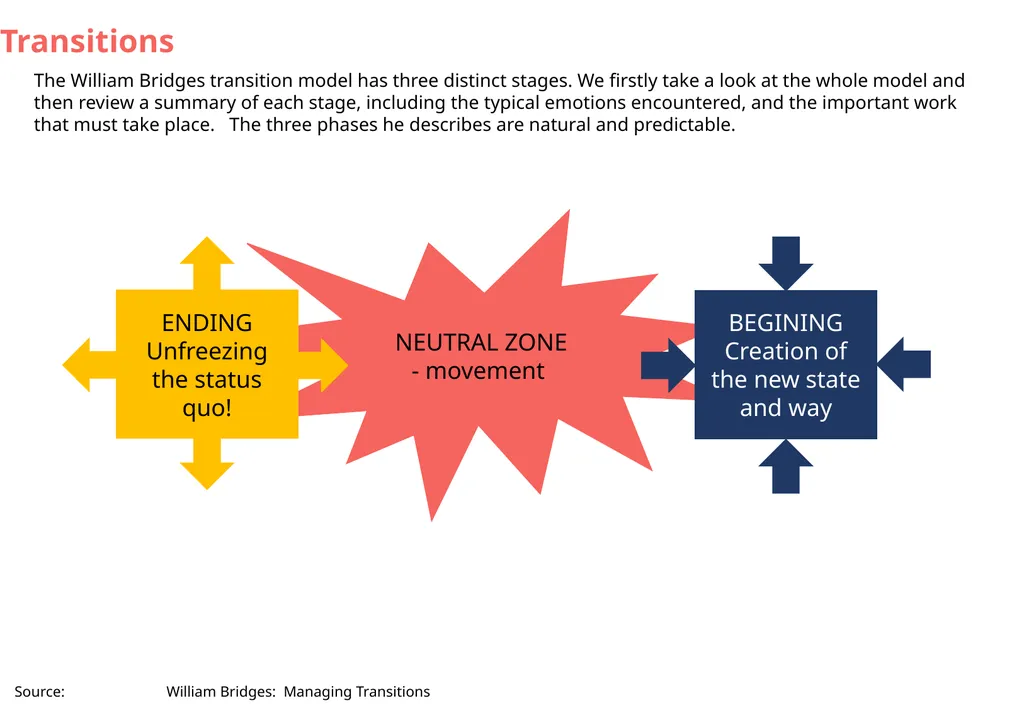
Transitions The William Bridges transition model
Author: karlyn-bohler | Published: 2025-08-04
Description: Transitions The William Bridges transition model has three distinct stages. We firstly take a look at the whole model and then review a summary of each stage, including the typical emotions encountered, and the important work that must take
Download Presentation
Download the PPT/PDF: Download
Transcript:
Loading transcript…